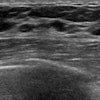CARLSBAD, CA - A safety program at Cincinnati Children's Hospital that emphasized changing the facility's work culture lowered the rate of serious safety events in the radiology department from one every 200 days to one every 839, according to a presentation at this week's Society for Pediatric Radiology (SPR) meeting.
Cincinnati Children's chief of radiology Dr. Lane Donnelly said that by focusing on changes to the hospital's work culture in addition to tactical steps, Cincinnati Children's has avoided a number of the oversights and miscommunications that can lead to serious safety events.
Top-down changes
The cultural changes at Cincinnati Children's had to come from the top. So Donnelly asked the hospital CEO, a former corporate attorney, for a public statement that safety is the hospital's top priority.
"It took awhile, but this is what we got," he said, displaying the final official wording: "There is no priority higher than safety." He continued, "It's not the same thing as saying patient safety is the number one priority, but it gave us what we needed."
Donnelly said he worked on the safety project with a consultant who also works on high-reliability practices in the nuclear power and airline industries. They started by reviewing past events and circulating staff questionnaires.
"What we found out was at Children's we had a serious safety event about one out of every 20 days, a deviation in best practices that resulted in significant harm to patients," he said. "In radiology, we had a serious safety event once every 200 days."
Radiology had already led in the tactical improvements, he said. The radiology department became the "guinea pig" for safety improvement because while head of radiology, Donnelly was already trying to implement a program throughout the hospital.
Reviews showed that serious safety events took layers of mistakes, he said, likening errors to stacking holey layers of Swiss cheese, in which all the holes line up.
"Every time there was an event, there were at least eight errors that occurred," Donnelly said. "A lot of them involved lines and tubes -- lines and tubes are ubiquitous, super common. We know they are dangerous and we need to over-communicate about them."
In one case, a radiologist noted that a young patient's PICC line tip was deep in the right atrium. The radiologist noted the location but failed to call the nurses on the floor. The floor physicians and nurses either did not read the note or failed to realize the significance of the findings. The next day, the radiologist noticed the PICC line tip in the right atrium again, but because it was unchanged and had been noted, it was not followed up. The atrium ruptured and the child died, Donnelly said.
In another event, a part of a central line in the right atrium sheared off and was left behind. "People kept seeing it, and they kept commenting: 'There's something in the picture; I don't know what it is,' " Donnelly said. "In the last three events we had, problems were identified but no action was taken."
Tactical interventions addressed repeated mistakes, while the cultural approach looked at how to create a climate that not only improved safety but increased communication from the frontline healthcare providers who could see potential problems unfolding.
Implementing change
After their preparatory reviews, Donnelly's team rolled out a five-point program, starting with error prevention training, which consisted of a mandatory two-hour program with department nurses, doctors, and technologists training together, including on how to communicate better.
"It was more effective to have the nurses and physicians training together," Donnelly said. "We worked on getting people to communicate clearly."
That meant cutting back on memos sent around in isolation and, instead, setting up operational rounds where safety team members met with staff members to find out what they were seeing go wrong or what could potentially go wrong. The onsite conversations were very effective, he said.
"We were asking about the practice of taping paper forms to radiology cassettes and hearing that it worked just fine, when a tech came in holding two cassettes and said we've got two NICU patients who were switched," he said. "Now we've got a bar code system in place."
Safety walkabouts led to cuts in excessive paperwork, such as the seven-page request radiologists had to fill out and sign, in which any omission on the forms meant patients had to wait for services. They also uncovered and solved a problem of patients getting lost in the MRI waiting room: The pagers the technologists carried to let them know their next patient had arrived couldn't go into the magnet room, so collecting patients still came down to walking out and calling for them in the waiting area long after they'd arrived.
"We found out the ultrasound technologists overnight didn't feel safe, and that radiologists couldn't find them because they were off doing portables," Donnelly said. "We got them cell phones."
Hospital staff pointed out important concerns during the walkabouts. "One MRI suite had a door that, during a power outage, there was no way to open it. That meant the patient was stuck inside," he explained. "Those were problems that didn't become events because people could talk to us in their workspace."
Along with tactical steps, Donnelly looked at transforming the culture. "We should all understand that everyone is accountable, including me," he said. "And we want a culture where people are expected and encouraged to speak up, where they are rewarded for doing that."
A state-of-the-art cause-analysis program and a robust "lessons learned" program were put in place, and the information is posted prominently on the hospital's internal Web site. In addition, restructuring safety governance from a faraway and sometimes uninvolved committee to active contact with colleagues and safety leaders within each department brought home the idea that the priority on safety is immediate.
"People complained that they told us about problems and then never heard back," he said of the status quo before the program was implemented.
How much time does it take to maintain Cincinnati Children's culture-based safety program? "A lot of the sessions and discussions are built into regular meetings," Donnelly said.
Besides cutting the number of incidents by a factor of four, follow-up surveys show significant statistical improvement on 43% of the issues mentioned in the original questionnaire -- and more than that in radiology, where the program was first rolled out.
Donnelly said that while he's pleased by the numbers, he isn't willing to claim a fourfold improvement yet. "Because these are rare events, we have yet to reach a statistically significant threshold," he said.
By Marty Graham
AuntMinnie.com contributing writer
April 24, 2009
Related Reading
SPR news: Rads must take lead in reducing pediatric CT dose, April 23, 2009
California hospital fined $25,000 for pediatric CT radiation overdose, March 24, 2009
Joint Commission may survey for MRI safety, March 5, 2009
Copyright © 2009 AuntMinnie.com



















